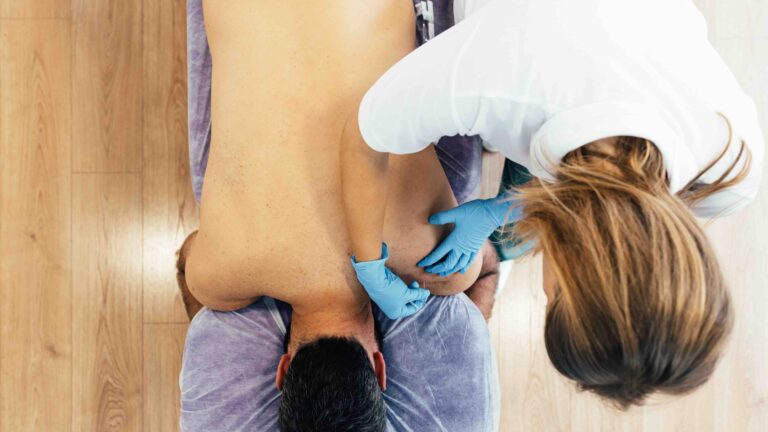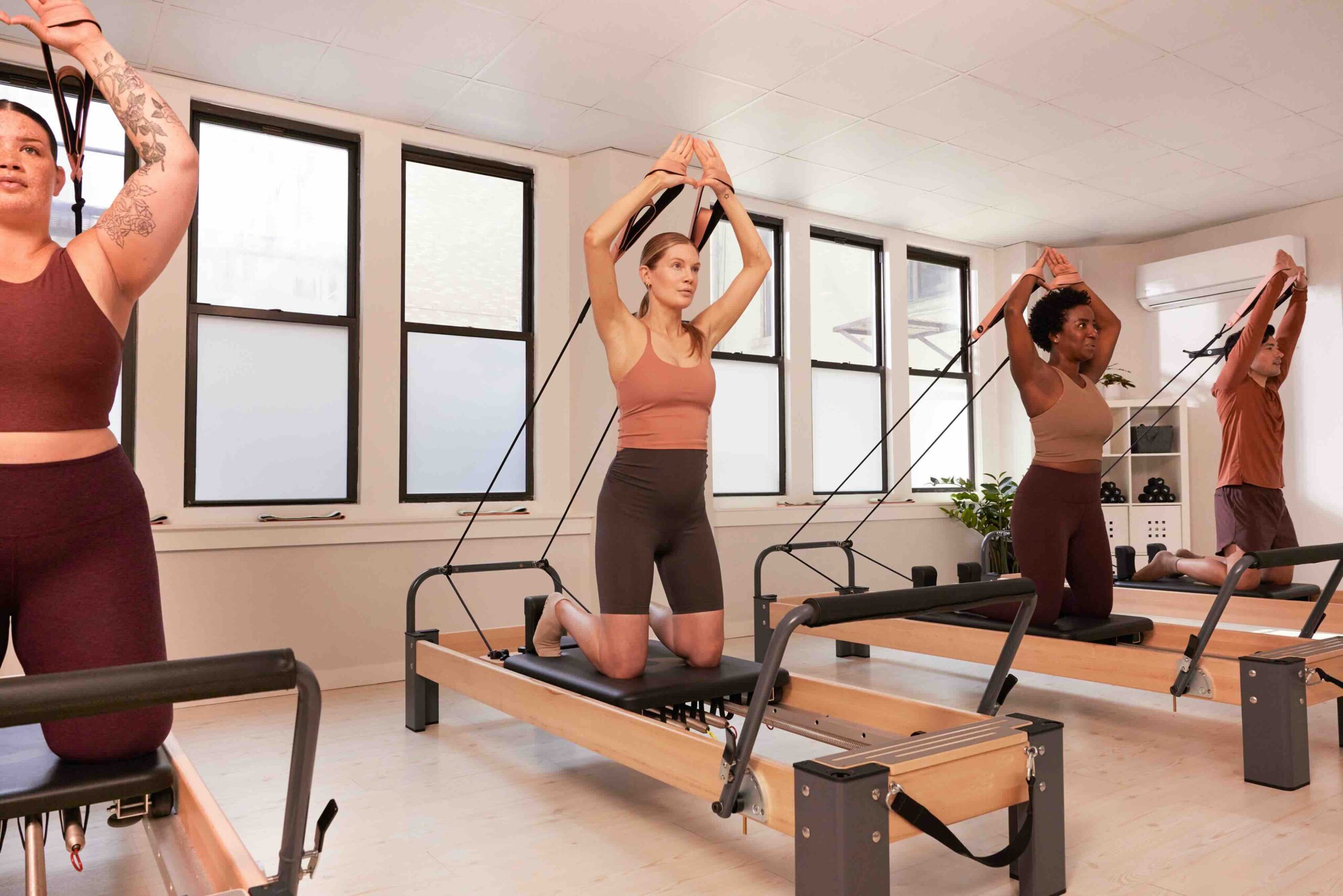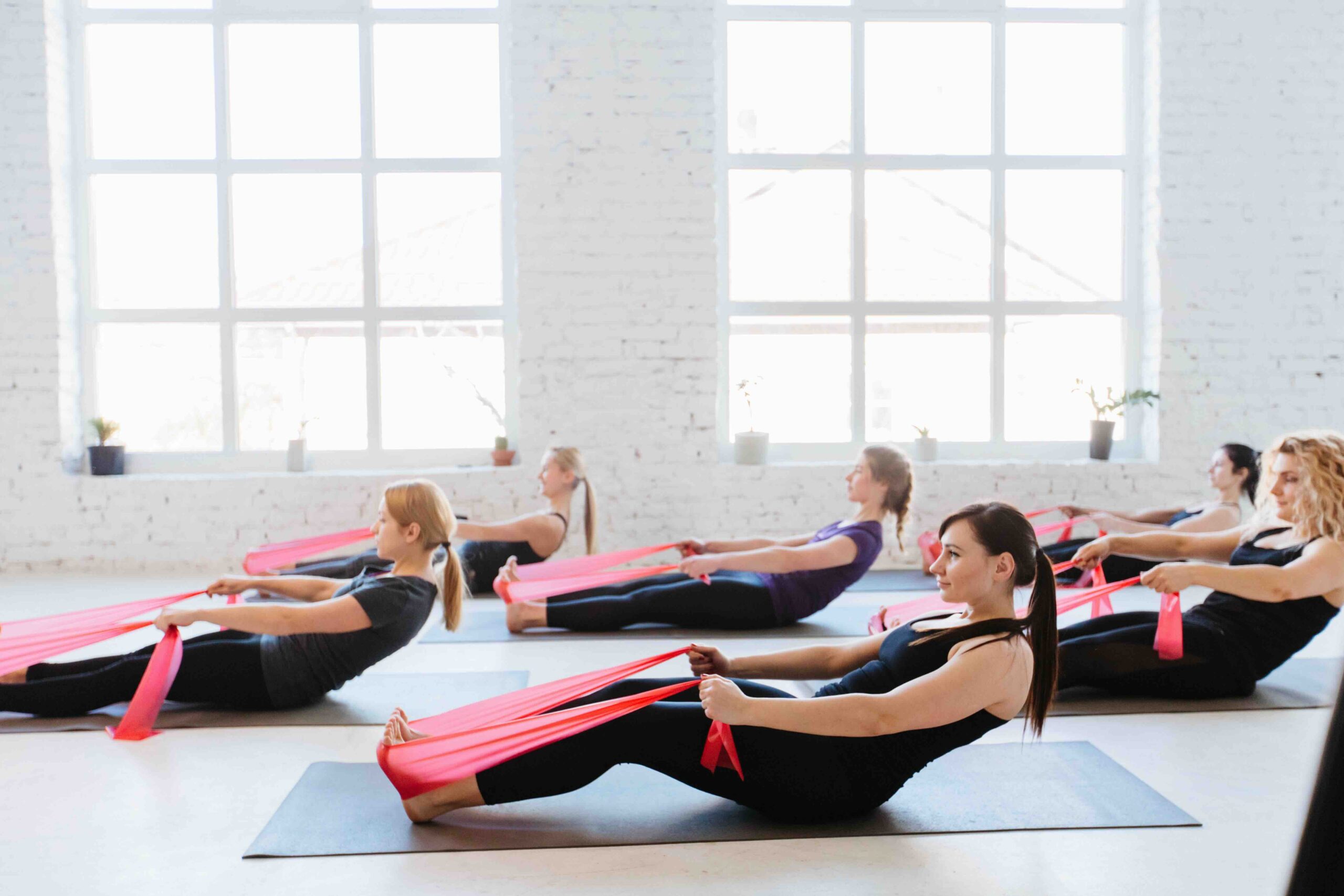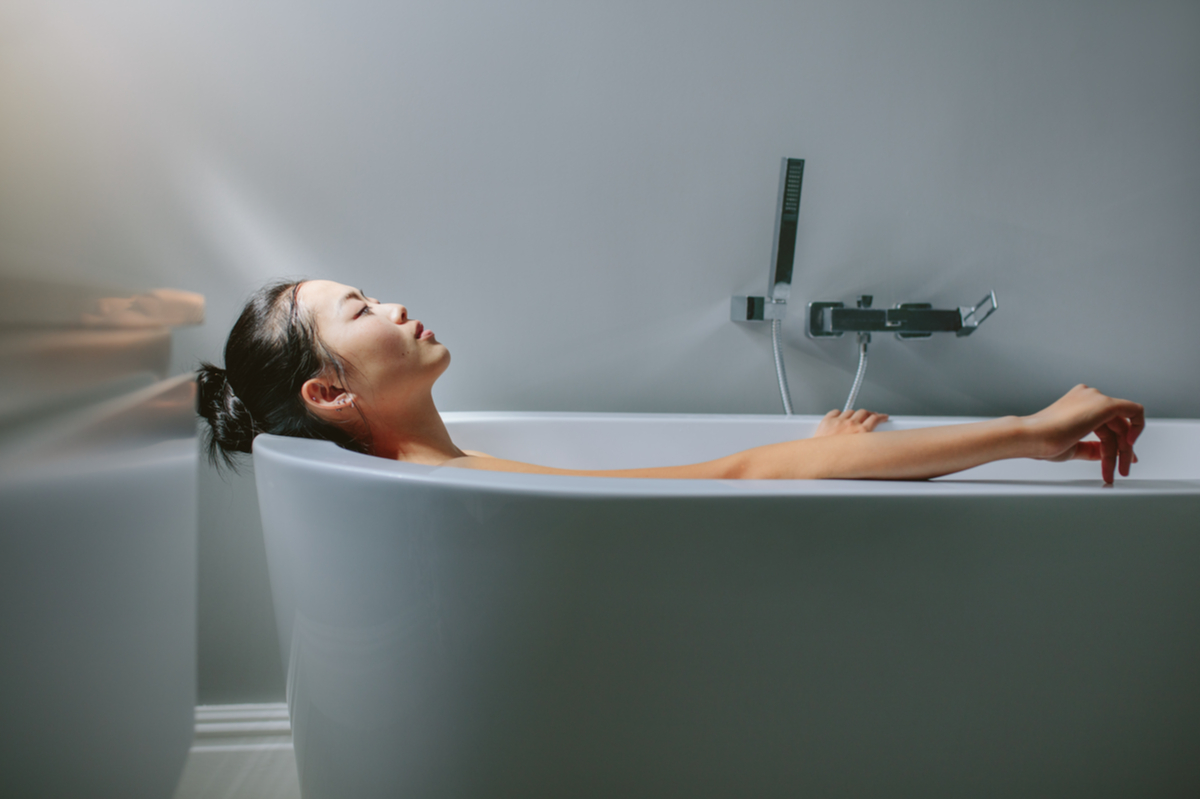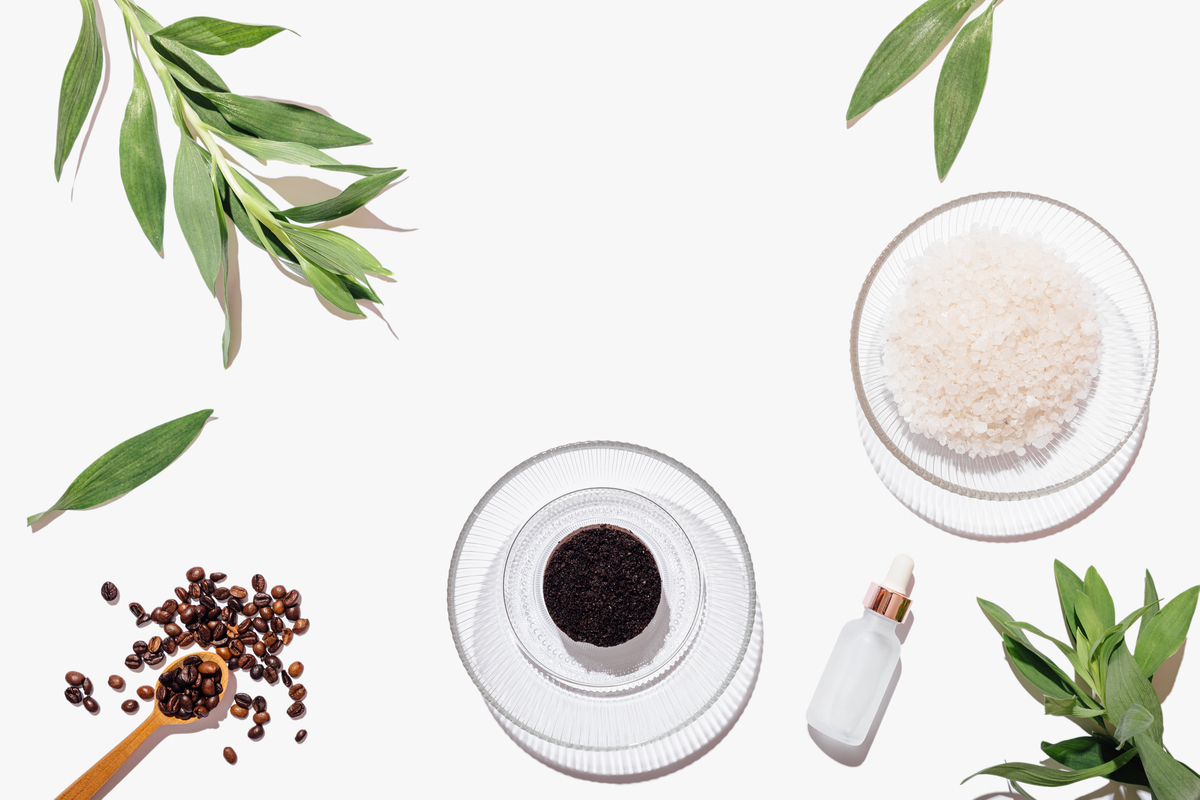Have you ever heard of dry needling? It’s a type of physical therapy used to treat muscle pain and tension, as well as increase range of motion. But what is it exactly, and is it right for you? In this article, we’ll dive into the details behind dry needling, so that you can decide if this treatment option could be beneficial for your health.
The practice of dry needling involves inserting small needles into areas in which muscles are particularly tight or painful. This allows physical therapists to target specific problem areas with precision accuracy. The goal is not only to alleviate acute symptoms but also to help restore balance within the body’s musculoskeletal system over time.
Dry needling has been around since the 1950s, but its popularity has grown significantly in recent years due to positive patient outcomes and an increased understanding among practitioners about how and when to use it safely. So if you’re looking for relief from chronic pain or mobility issues, then read on—dry needling may just be the solution you’ve been searching for!
What is dry needling?
Dry needling is a form of physical therapy that involves inserting thin filiform needles into the body to release tight muscles and improve movement. This type of treatment focuses on myofascial trigger points, which are areas of tightness in the soft tissues around joints or along muscle fibers. It helps to reduce pain, improve range of motion, decrease tension, and promote healing.
The dry needling process begins with an evaluation by your physical therapist. During this assessment, they will examine various aspects of your condition including medical history, muscle strength, posture, gait pattern, joint mobility and more. Based on their findings they can then determine if dry needling is right for you. The actual procedure involves several small needles being inserted into the skin at specific locations within the affected area. These needles help to stimulate nerve endings and cause involuntary reactions in the targeted tissue which helps to relax it and alleviate symptoms associated with chronic pain or injury.
Dry needling has been used as an effective way to manage many types of musculoskeletal conditions such as back pain, neck pain, plantar fasciitis, carpal tunnel syndrome and other injuries related to overuse or strain from sports activities. Ultimately it’s up to you and your healthcare provider to decide whether this approach is best suited for treating your condition but research suggests that it may provide significant relief when used correctly and safely.
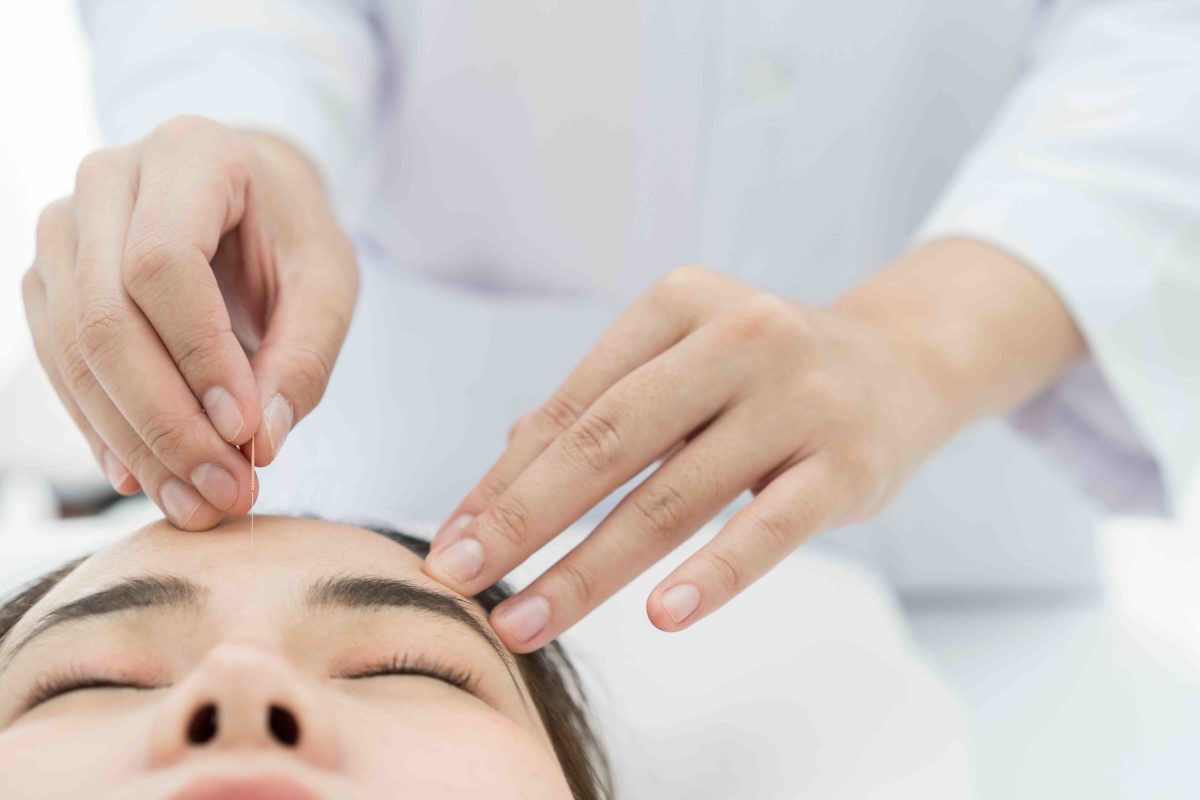
What are the benefits of dry needling?
Dry needling is an increasingly popular form of physical therapy that involves the insertion of thin needles into certain areas of muscle tissue. It can provide a wide range of benefits to those looking for relief from conditions such as chronic pain, muscle tension and more. In this section, we’ll discuss some of the key advantages associated with dry needling and explore whether it’s right for you.
One major benefit of dry needling is its ability to reduce inflammation in affected muscles. This helps relieve many types of chronic pain by reducing swelling and tenderness around inflamed joints or nerves. Additionally, inserting needles into tight knots in the muscle can help release built-up tension which often occurs due to overuse or repetitive strain injuries (RSI). Here are some other potential benefits:
- Improved circulation – Increases blood flow within affected tissues, helping them heal faster
- Enhanced mobility – Breaks down adhesions between fascia and muscles allowing greater joint movement
- Reduced spasms & cramps – Helps to relax contracted muscles which may cause discomfort
- Heightened relaxation – Stress hormones released during treatment help promote feelings of calmness
Dry needling has become an increasingly popular choice for treating musculoskeletal issues due to its wide range of therapeutic effects. While there are numerous potential benefits associated with this form of physical therapy, ultimately it comes down to your individual needs when deciding if it’s the best option for you. Be sure to consult your doctor or physiotherapist before beginning any new treatments so they can determine what’s best suited for your health goals.
What can dry needling treat?
When considering dry needling, it’s important to understand what conditions can be treated. Dry needling is a therapeutic technique which uses thin needles to target trigger points in the body. This process activates the nervous system and releases natural painkillers called endorphins into the area where they are needed most.
Dry needling can be used to treat a variety of muscular and joint issues such as tendinitis, sciatica, plantar fasciitis and carpal tunnel syndrome. It can also help with tension headaches, whiplash injuries, sports-related strains or sprains and other repetitive stress disorders. In addition to these physical ailments, dry needling has been found to have positive mental health benefits by reducing anxiety and improving sleep quality.
The effectiveness of dry needling varies from person to person; however, many people who use this therapy report feeling less pain after just one session. Ultimately, consulting with your doctor or physiotherapist will help you decide if dry needling is right for you. With their expertise at hand, you’ll be able to make an informed decision about whether this treatment could benefit your unique situation.
What are the risks of dry needling?
Dry needling is an increasingly popular technique for treating musculoskeletal pain, but it’s important to understand the potential risks before undergoing this form of treatment. This article will explore what those risks are and how you can minimize them.
The most common risk associated with dry needling is a slight discomfort or bruising at the site where the needle was inserted. It’s normal to feel soreness in the area immediately after a session, and any residual soreness should be gone within 24 hours. Bruising may also occur, but usually resolves on its own within a few days. You might even experience some minor bleeding as well.
In rare cases, more serious side effects such as infection or nerve damage have been reported following dry needling treatments. However, these incidents are extremely unlikely if the procedure is performed by a qualified professional in sterile conditions. To reduce your chances of experiencing any adverse reactions from dry needling, make sure to check that your practitioner has adequate training and certifications in their field before proceeding with treatment.
Ultimately, while there are some potential risks associated with dry needling, they’re generally quite minimal when compared to other forms of medical intervention – so long as proper precautions are taken beforehand. If you think that the benefits of dry needling outweigh any possible risks for you specifically then it could be worth considering as part of your overall pain management strategy.
Is dry needling painful?
When it comes to dry needling, one of the biggest questions people have is how painful the procedure is. This is a valid concern since not everyone tolerates pain in the same way. The answer depends on several factors, including your individual physical condition and the amount of needle stimulation applied by the practitioner during treatment.
In general, most patients experience some kind of discomfort while undergoing dry needling, though this may vary depending on their existing level of tolerance for pain. Some report no pain at all or minor sensations that are more like pressure than actual pain. Others describe mild soreness afterwards which usually subsides after 24 hours. In any case, practitioners use special techniques to minimize discomfort throughout the process and ensure patient safety and comfort levels remain high.
Overall, dry needling may be an effective option for those looking for relief from muscle tightness, trigger points, and other musculoskeletal issues. As always though, each person’s individual circumstances should be taken into consideration before deciding if this type of therapy is right for them. It’s important to discuss any concerns you might have with your healthcare provider so they can assess whether or not it would be beneficial in your particular situation.
Dry needling alterantives
When it comes to treating muscle pain, dry needling might not be the right solution for everyone. There are some alternatives that can provide relief and improved mobility with fewer risks associated.
The most common alternative treatments include: – Manual Therapy: This therapy involves a physical therapist manually working on muscles and joints in order to reduce stiffness or tension as well as improve joint range of motion. It includes techniques such as massage, stretching, mobilization, and manipulation. – Exercise Therapy: This type of therapy is based on strengthening exercises tailored to an individual’s needs and abilities. Exercises may involve using weights, bands, balls, or other equipment to increase flexibility and strength while decreasing pain levels.
Other therapies that may help with soreness or tight muscles include yoga and acupuncture. Yoga helps by improving balance and posture through gentle stretches which can lead to increased flexibility and reduced inflammation in the body. Acupuncture works by stimulating specific points along energy pathways in the body known as meridians which can release endorphins – natural chemicals in your brain – resulting in relaxation and decreased stress/pain levels.
No matter what treatment you choose, make sure you consult with your physician first to determine if this is the right option for you based on your medical history.
How to find a qualified dry needling practitioner
When it comes to dry needling, finding a qualified practitioner is key. Not only do you want someone who knows what they’re doing, but also someone with the right experience and training. So how can you make sure that your chosen practitioner is up to the task?
First of all, take some time to look into the credentials of any prospective practitioners. Look for qualifications such as certification or licensing in acupuncture or physical therapy (which are often required for dry needling). You should also research their previous experience—how long have they been performing dry needling treatments? Do they specialize in treating certain conditions? All these factors will help you determine whether they’re the best fit for you.
It’s also important to talk with any potential practitioners before committing to treatment. Ask questions about their approach, techniques used and past experiences working with clients like yourself. This will give you an insight into how comfortable you feel under their care and how confident you are in their ability to provide quality care. Make sure that your practitioner takes the time to answer all your queries about the procedure itself so that there are no nasty surprises when it comes to treatment day!
Finding a qualified dry needling practitioner doesn’t have to be difficult: just do some research beforehand and don’t hesitate to ask questions until you feel fully informed and comfortable with your decision.
How is dry needling different from acupuncture?
Dry needling and acupuncture are two treatments that use fine needles inserted into the body. However, there is a distinction between the two therapies – while they may appear to be similar on the surface, they differ in terms of their approach and techniques used.
Acupuncture has been practiced for thousands of years in Chinese medicine as part of its holistic philosophy, which emphasizes balancing different systems in the body to achieve health and wellbeing. The aim is to adjust energy pathways known as meridians by placing thin needles at specific points along these channels.
On the other hand, dry needling focuses more on targeting individual muscles and connective tissues by inserting needles directly into trigger points rather than relying solely on meridian pathways. This can help reduce pain or muscle tension caused by knots in those areas. It’s important to note that dry needling does not rely on any specific spiritual beliefs like traditional acupuncture does; it instead uses modern anatomical concepts to treat musculoskeletal conditions.
So if you’re considering either treatment for pain relief or rehabilitation, it’s best to talk with your doctor about which option would work best for you based on your particular needs and goals.
How to prepare for dry needling
Preparing for a dry needling session is just as important as the treatment itself. Dry needling involves inserting thin needles into tight muscles in order to create a relaxation and healing effect, so it’s important to ensure you’re adequately prepared. Here are some tips on how best to prepare for dry needling.
First of all, it’s essential that you do your research before committing to dry needling. Make sure you understand what this type of therapy entails, the potential risks associated with it and the expected outcomes from your sessions. It’s also worth discussing any concerns or questions you have about the procedure with your doctor or therapist beforehand.
When getting ready for an appointment, wear loose-fitting clothing that allows easy access to the parts of your body being treated. You should also limit activities like exercise prior to your session, since engaging in strenuous activity can cause additional muscle tension which could interfere with the effectiveness of the treatment. Finally, make sure you stay hydrated throughout the day leading up to your appointment – this will help reduce inflammation and aid recovery afterwards.
By following these simple steps, you can be confident that you’re giving yourself every chance for a successful dry needling experience!
How long does a dry needling section last?
Generally speaking, it depends on what condition you’re treating. For more minor issues, such as neck or shoulder tension, a single 30-minute session may suffice for some people. However, if you are dealing with chronic pain in multiple areas of the body, then it’s likely that your therapist will recommend several sessions over an extended period of time. During each session the needle insertion locations will change depending on where you feel most discomfort.
The length of treatment also varies from person to person based on their individual needs and goals. Your therapist will work closely with you throughout the process and adjust the duration of each session accordingly so that you get optimal results without sacrificing comfort or safety. Ultimately, it’s important to keep communication open between yourself and your health care provider so they can ensure that any treatment plan is tailored specifically to meet your individual needs.
Dry needling side effects
Dry needling is a form of therapy that can help alleviate pain, improve mobility and reduce muscle tension. It involves inserting small needles into the affected areas of your body to stimulate muscles and trigger points. While it can have many benefits for those with chronic pain or injuries, it’s important to understand potential side effects from dry needling sessions before getting started.
The most common side effect reported after a session of dry needling is soreness in the area where the needle was inserted. This soreness may last up to 48 hours post-treatment but should dissipate quickly once you begin to move around normally again. Other minor side effects such as bruising at the site of insertion or slight bleeding can also occur but these are usually temporary and will fade within a few days. In rare cases, people might experience more severe reactions like dizziness, fainting or even an allergic reaction depending on their individual sensitivity level to the procedure.
It’s important to talk with your doctor if you’re considering trying dry needling so they can assess whether it’s right for you given any preexisting conditions you might have. If your doctor agrees that this type of treatment could be beneficial, they will discuss all possible risks associated with it beforehand so that you know what to expect during and after your session.
Conclusion
In conclusion, dry needling is a great option for the treatment of musculoskeletal pain. It’s relatively quick and easy to do, with sessions lasting between 30 minutes and an hour. You should expect to have multiple treatments depending on your individual needs, and insurance may cover some or all of the cost. Results can be seen quite quickly in many cases but there are potential side effects that you should be aware of before going ahead.
Overall it’s important to talk to your doctor first if you’re considering trying out dry needling as they will be able to advise you on whether it’s suitable for me. They’ll also be able to provide more information about what kind of results I might see and any possible risks associated with the procedure.
Ultimately, only you can decide if dry needling is right for you – so research as much as possible before making up my mind!
